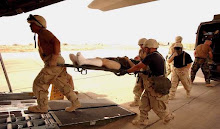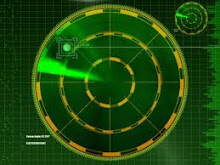By Steve Hammons
The concept of “force protection” for U.S. military personnel and U.S. assets involves a system of analyses, assessments and actions in response to ever-changing threats.
Multiple force protection levels can flex and fluctuate in response to conventional and unconventional dangers, and from various and changing directions and sources.
Readiness and ability to recognize new and emerging threats are key for force protection for our Army soldiers, Marines and other tip-of-the-spear warfighters from the Navy and Air Force.
On March 18, 2009, James Mattis, former Marine Corps general and former secretary of defense, addressed the House Armed Services Committee.
Mattis was then commander of the U.S. Joint Forces Command. At the time, the Joint Forces Command was one of 10 combatant commands in the U.S. Department of Defense and oversaw a force of 1.16 million active duty, National Guard and Army Reserve soldiers, Air Force personnel, Navy personnel and Marines.
ADVANCED TRAINING
In his address, Mattis said “core competency” is needed in “irregular warfare (IW).” He also referenced "hybrid warfare" which can combine IW and more conventional methods.
Mattis said adversaries could use methods of a "hybrid nature that combine any available irregular or conventional mode of attack, using a blend of primitive, traditional and high-tech weapons and tactics."
He told committee members, "We must have balanced and versatile joint forces ready to accomplish missions across the full spectrum of military operations – from large-scale, conventional warfare to humanitarian assistance and other forms of 'soft' power."
Mattis’ guidance to lawmakers was not hypothetical.
Many thousands of American military personnel have been killed and tens of thousands severely injured during the 2003 invasion and subsequent multi-year occupation of Iraq, and in attempts to stabilize Afghanistan. (Civilian deaths from those conflicts are estimated in the high hundreds of thousands, at a minimum.)
American military families have been traumatized by the deaths of and severe injuries to sons, daughters, husbands, wives, brothers, sisters, fathers, mothers and other loved ones serving in our armed forces.
In facing the sometimes confusing and changing threats around us, Mattis put forth a key question: "What capabilities are required?" An obvious answer: Education and training of joint personnel, he said. "A trained warrior may perform acceptably in a conventional operation, but irregular and hybrid wars demand highly-educated warriors to prevail," he told the committee.
He also told committee members, "Special emphasis must be placed on human, cultural, language, and cognitive skills. A 'cognitive' warrior knows how to acquire knowledge, process information from multiple sources, and make timely, accurate decisions in complex, ethically challenging and ever-changing environments."
"So, we must be prepared to think the 'unthinkable,' using our study and imagination to help us defeat the enemy," Mattis told committee members. "We must employ to our advantage the power of both inspiration and intimidation, each in the appropriate measure, to confound our enemies."
COMMON OPERATIONAL PICTURE
Now, in January 2020, we find ourselves in a situation when the subject of force protection of our military personnel – many in their 20s and 30s, with spouses, young children, parents, siblings and other loved ones – is haunting our souls.
Back in 2009, Mattis also told the House Armed Services Committee that he believed current and future national security challenges demand "whole-of-government" approaches.
"Essential to a whole-of-government approach for applying all aspects of national and international power is the ability to share information and situational awareness among all partners," he said.
When information is appropriately shared, an "interagency common operational picture" is created, Mattis told the committee. Military personnel must communicate with civilian counterparts and create a synergy of effort, Mattis said.
As part of preparation for enhanced U.S. force protection, it could be helpful to revisit the concept of “transcendent warfare.” This term was put forth by a former Navy SEAL officer back in 2001 when he was completing graduate-level studies at the Marine Corps War College.
The idea of transcendent warfare was related to U.S. defense research in the 1970s, ‘80s and ‘90s into human perception, awareness, consciousness and intuition.
Now, expanding military training and civilian public awareness of transcendent warfare concepts could be helpful in our approaches to force protection for U.S. armed forces personnel.
(Related article “Reagan’s 1987 UN speech on ‘alien threat’ resonates now” is posted on the CultureReady blog, Defense Language and National Security Education Office, Office of the Undersecretary of Defense for Personnel and Readiness, U.S. Department of Defense.)



































































































































































































